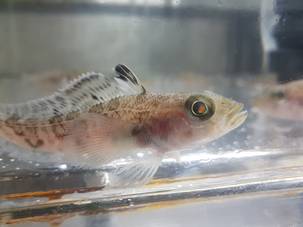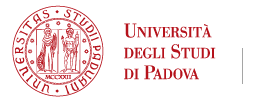
SPOTLIGHT: The hidden biodiversity within the Antarctic fishes: new challenges for population genetics in the Ecology Unit
Scadenza: 25.06.2019 14:43
Pubblicato il: 25.06.2019 14:35
SPOTLIGHT: The hidden biodiversity within the Antarctic fishes: new challenges for population genetics in the Ecology Unit
The south polar seas are dominated by notothenioid fish. These fishes have exceptionally high rates of species evolution compared to temperate and tropical taxa. Although they have radiated so quickly over ~20-25 Myr, thanks to the essential contribution of the Antifreeze Glycoproteins (AFGP) in enabling life at subzero temperatures, they have developed an astonishingly large variety of ecological, behavioural, morphological and life-history characteristics.
Population genetics studies at the Biology Department of the University of Padova have helped to disclose some of the hidden complexity of the notothenioid biodiversity and elucidate the role of macroevolutionary processes, i.e. at interspecific scale, in their adaptive radiation and speciation dynamics.
Recent studies at our team, within the Ecology Unit of the Biology Department, suggest that secondary contacts between recently diverged species of the genus Chionodraco may have led to natural events of hybridization that leave signatures of introgression in notothenioids’ genome. In a study we published in 2013 in Molecular Ecology (Marino et al. 2013), we found shared alleles and similar allelic frequencies at 18 microsatellite loci, still in the presence of reciprocal monophyly at the mtDNA. A more advanced analysis, via so called Approximate Bayesian Computation (ABC), suggests that these shared alleles could bear the signature of introgression occurred most likely during the two major glacial times and owing to secondary contacts among species previously geographically separated. Now, we are investigating the present geographic distribution limits of the three species belonging to the genus Chionodraco. Preliminary evidences indicate a larger distribution for one of the species and lend to the speculation that climate change and increased sea surface temperature may lead Antarctic fishes to changes in their distribution limits in search for colder waters, closer to the continental ice shelves.
In a parallel study, we are gaining new insights also in the differentiation in another group of Antarctic notothenioids, the four alleged species of the genus Lepidonotothen.
Our studies and a growing literature on Antarctic species are showing that population divergence and speciation in the face of gene flow are no rare exception among notothenioid fish. Our future research trajectories will leverage on the advancing sequencing technology and availability of increasingly more complete notothenioid genomes to reconstruct the genomics of speciation in Antarctic fishes. Antarctic notothenioids represent a fantastic model group of organisms to study mechanisms of speciation from a genomic point of view and to find out whether any specific region of the genome may be involved in hindering or maintaining the reproductive isolation between species.
Species identification and classification are fundamental, as species represent the basic unit for the management and conservation of biodiversity. Future challenges should focus on advancing species identification and discovery tools through the analysis of genetic differences and on understanding mechanisms that shape species differences.
If you like to know more about the topic, come and see our poster to be presented in the framework of the symposium “Units of diversity: tools, strategies and case-studies to define species limits” at the upcoming 8th Congress of the Italian Society of Evolutionary Biology organized by the Department of Biology of the University of Padova and hosted in the Botanical Garden and in the ‘Galileo Galilei’ Main Hall of Palazzo Bo in Padova.
Join us at the 8th SIBE Congress!
Chiara Papetti & Lorenzo Zane
www.biologia.unipd.it
https://twitter.com/pchiara78
https://chiarapapetti.wixsite.com/papettilab
https://www.biologia.unipd.it/people/?tx_wfqbe_pi1%5Baccount%5D=lorenzo-zane





